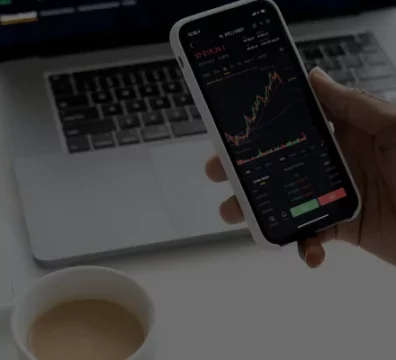How Discipline and Selectivity Drive Consistent Profits
Most traders think trading more means making more money. In reality, overtrading is one of the fastest ways to drain an account and your mental energy.
Overtrading isn’t just about losing trades — it’s about destroying confidence, chasing setups that don’t exist, and missing the real opportunities because you’re stuck managing poor ones.
The truth? Patience pays. In this guide, we’ll explore why traders overtrade, what it costs you, and the practical steps you can take to stop impulsive trading and start waiting for A+ setups.
What Is Overtrading and Why It Happens
Overtrading is when you enter more trades than your strategy or risk management calls for. It usually looks like:
- Taking trades outside of your plan
- Jumping in and out of the market constantly
- Closing and reopening positions impulsively
Why does it happen?
- FOMO: Fear of missing out on moves.
- Boredom: Feeling like you must always be in a trade.
- Screen Addiction: Watching charts too long leads to forcing trades.
Overtrading is less about technical mistakes and more about psychology.
The Cost of Overtrading
Traders underestimate how expensive overtrading is.
- Lower Win Rates
When you take low-quality setups, your accuracy drops. Even one or two bad trades can erase the profits of your good ones. - Emotional Drain
Overtrading creates stress. The constant cycle of regret and impulsive entries leads to burnout. - Missed Big Opportunities
While you’re stuck in a random trade, the real high-probability setup appears — but you can’t take it because your capital or mental bandwidth is already tied up.
Why Patience Is a Trader’s Superpower
Patience doesn’t mean doing nothing — it means waiting for the right moment.
Selectivity = Accuracy: By trading less, you naturally trade better. A+ setups have higher probability, and your win rate improves.
Less Stress = Clearer Mind: Instead of being glued to screens all day, you’re calm, rested, and confident when the right opportunity comes.
The Professional Mindset: Amateurs chase every candle. Professionals wait for setups that align perfectly with their plan.
Practical Strategies to Stop Overtrading
Here’s how to build discipline into your trading:
- Set a Daily Trade Limit
Cap yourself at 1–3 trades per day. If you hit the limit, stop. This forces you to be selective. - Define an A+ Setup Checklist
Write down exactly what qualifies as a trade-worthy setup (e.g., trend alignment, volume confirmation, risk:reward ≥ 2:1). If it doesn’t meet the checklist, don’t take it. - Journal Every Trade
Document the reason you entered, exited, and whether it fit your plan. Reviewing mistakes shines a light on overtrading habits. - Use Alerts Instead of Watching Charts
Set TradingView alerts at key levels. This prevents you from staring at price action and inventing trades out of boredom.
Building Patience Into Your Trading Routine
Mindfulness Techniques
– Simple breathing or meditation routines reduce impulsive decision-making.
Scheduled Screen Breaks
– Step away from the charts after placing alerts. Give yourself “off-chart” time.
Track Quality vs. Quantity
– Don’t measure success by number of trades. Measure it by how many trades matched your A+ criteria.
Case Study: From Impulsive to Patient Trader
Consider two traders with the same strategy:
- Trader A: Takes 10 trades a day, chasing every minor move. Accuracy: 30%. Equity curve looks like a saw blade.
- Trader B: Waits for only 2 A+ setups per day. Accuracy: 65%. Equity curve shows steady growth.
The difference isn’t strategy — it’s patience.
Final Thoughts: Patience Is Not Passive — It’s Power
The market isn’t going anywhere. Every day, new opportunities appear. The traders who win are the ones who wait.
Overtrading is a symptom of impatience, fear, and lack of discipline. By slowing down, setting rules, and valuing quality over quantity, you flip the script.
Patience pays — not just in higher win rates, but in peace of mind and sustainable success.
